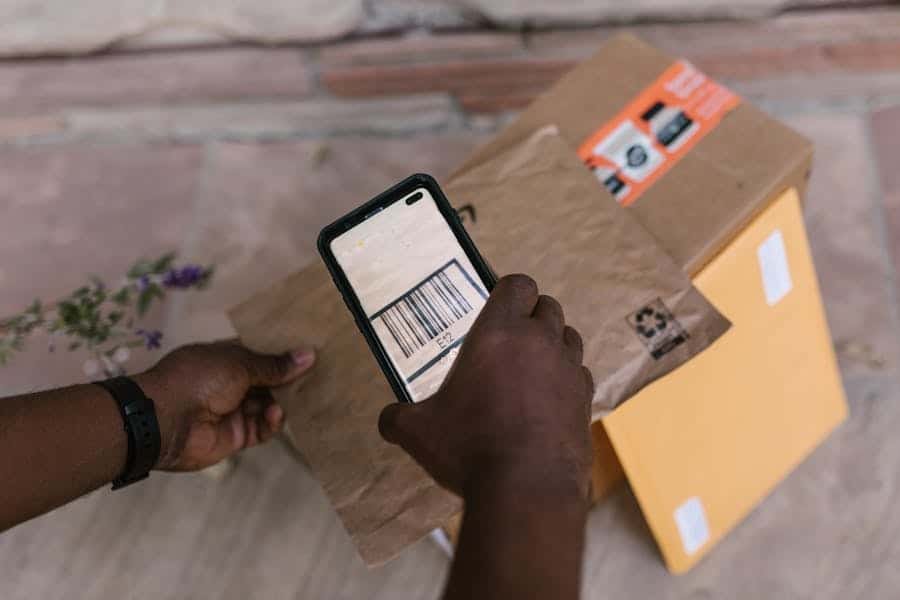
What makes an app for transport services effective?
The most important thing is that the transport apps do what they’re meant to do, and do it well. This is usually the result of clear communication and alignment between the client, developers, and designers during the discovery phase. It’s the first thing you should do before going through the following process.
A big part of the app’s success comes from an intuitive interface and smooth navigation. Users should instantly know where to tap, how to find key information, and how to place an order. For transportation apps, real-time GPS tracking is a must. It helps users see where their order or driver is and when to expect delivery.
Additional value comes from payment integrations, real-time notifications, in-app support, and user feedback features. It’s important both for your business to collect useful customer info and for your users to enjoy your app.
How can user-centered design improve transport apps?
User-centered design should always be placed at the heart of every design process. When you do apps for people, it makes sense to learn their behaviour and create a user journey before development. This way, you put a human at the center of your app and create both emotional connection and loyalty to your brand.
Our TRIARE team always starts work from here. We discover users’ needs, common habits while using transport apps, and of course, their behaviour. Then we do additional work to make the design adaptive to different screen sizes, make sure the app runs fast without delays, and ensure the navigation is simple and clear for everyone.
So, as a short conclusion, we can say that user-centered design affects your transport apps and builds a solid connection with your audience. People feel that the app was made just right for them, and more often come back.
What key features should every transport service app include?
An effective transport app or transport management software should combine safety, comfort, and convenience for users, while providing quick access to essential features and ensuring a transparent service experience. It could be realized through the following:
- First off, real-time GPS tracking. This feature lets users see the location of the vehicle and the arrival time, which builds trust and confidence in the service.
- Clear cost displays allow users to plan and give them control.
- Convenient booking or trip planning process, intuitive selection of pick-up and drop-off locations.
- Support for multiple payment methods, like cards, wallets, and sometimes even cash. This makes the service accessible to a wider audience. And, basically, it’s a must-have for today’s apps in any niche.
- Equally important are push notifications about trip status, the ability to leave feedback, and quick built-in support.
How do TRIARE experts approach the development of transport applications?
As we said before, we always start from the discovery phase. We analyse the client’s business goals, target audience who will use the app, competitors, and industry trends to be on the wave with the latest tech and features. Then we create different scenarios of how the users will interact with the app. During this work, we use Agile methodology to move to the final result step by step, with weekly reports, involving the client in the development process and testing all we have done.
The key part – UI/UX design, with an accent on intuitive navigation, adaptiveness, and user journey in mind. Then, our development team brings all the mockups to life, integrates GPS, API for maps, payment systems, notifications, and online support.
After the launch, we gather feedback from the first users, check that everything runs smoothly, without any bugs. Even after this stage, we provide technical support and react to any changes as fast as possible to ensure effective and fast work for the transport app. The same is true for transport and logistics software.
Why is real-time data integration crucial for transport apps?
Because this directly ensures the transport management in real time. Real-time data integration allows transport services to avoid traffic jams, redirect routes, and respond quickly to unforeseen events. Let’s imagine that there is an accident or heavy traffic. What will the system do in this case? It can adjust the route or offer another one to ensure timely delivery.
In terms of security, it enhances passenger and cargo safety by responding quickly to deviations or emergencies. It also brings transparency to users. Knowing exactly where your transport is and when it will arrive builds trust.
As well as this, continuous real-time data collection helps analyze system performance, improve planning, anticipate technical issues, and optimize resource use. Altogether, it contributes to higher productivity and customer loyalty.
How can scalability and performance impact the success of a transport app?
Scalability it’s the system’s ability to operate large volumes of users’ data without losing performance and system stability. Without it, your app is at risk of working more slowly on pick-loads, which leads to users leaving the app.
Productivity while picking loads is the key indicator. Fast page loading, no delays, and ongoing online support keep people using your app and show that it’s productive at any high or low loads.
The foundation of a successful transport app is a well-designed, scalable architecture and high performance, especially as more users and real-time requests come in. Working together, they ensure the users’ satisfaction and system stability even in high-load periods.
What are the common mistakes to avoid when developing transport service apps?
Here are the key ones:
- Lack of scalable architecture. This leads to a drop in performance as the number of users or requests grows.
- Ignoring comprehensive testing and performance optimization. Every system needs testing, because during the process may arise mistakes, that are easier to fix while development than after release.
- Poor UI/UX design. Confusing navigation, excessive features, and a lack of logic all scare users away. People come to resolve their issues, not to learn how to use your app.
- Insufficient security. Unencrypted data or weak authentication can undermine user trust and security standards that every app should have.
- Ignoring platform requirements. Ignoring App Store or Play Store requirements can lead to rejection. They have their own requirements, so it’s worth studying them to ensure your app finds its audience.
- Lack of post-launch support and feedback collection. Without updates and improvements, your app quickly loses relevance and user loyalty. Moreover, by ignoring user needs, you create a negative experience for your app.
How can transport apps adapt to changing user expectations in 2025?
Here are the essential points you should pay attention to.
- Hyper-personalization of experience. People expect an individual approach at every step. From route recommendations to personalized offers. Using AI will double your chances of success. It will let you analyze user behavior and preferences, enabling you to create personalized offers and loyalty programs.
- Integration with other transport. Today, everyone is striving for a single mobile space where you can combine taxis, public transport, car sharing, and other services. Instead of downloading dozens of different apps. The key need here is to plan trips, taking into account different transport in one app.
- Use of voice technologies. Voice assistants and chatbots based on AI are becoming the standard for convenient and fast interaction with users. Everyone places orders on the go, communicates with their smartphone by voice, and expects the same capability in apps. That is, to make reservations, receive information, and solve problems without having to type text.
- Data security. Privacy policies should implement multilevel authentication, encryption, and transparency. Today, the number of cyberattacks has increased significantly, so everyone wants to protect their data.
Adapting to these trends will allow transportation apps to not only meet the current needs of users but also anticipate their future requirements. What is the result? You will ensure market success and competitiveness in your niche.
Conclusions
First of all, keep the users at the center of everything. Build a roadmap on how they will use your app to understand how to set up all the further work. Then, meet all the standards and implementations that are needed for effective app performance. When you know what your audience expects to see and what your current business goals are, it’s much easier to create a product that brings value and boosts your business growth.
